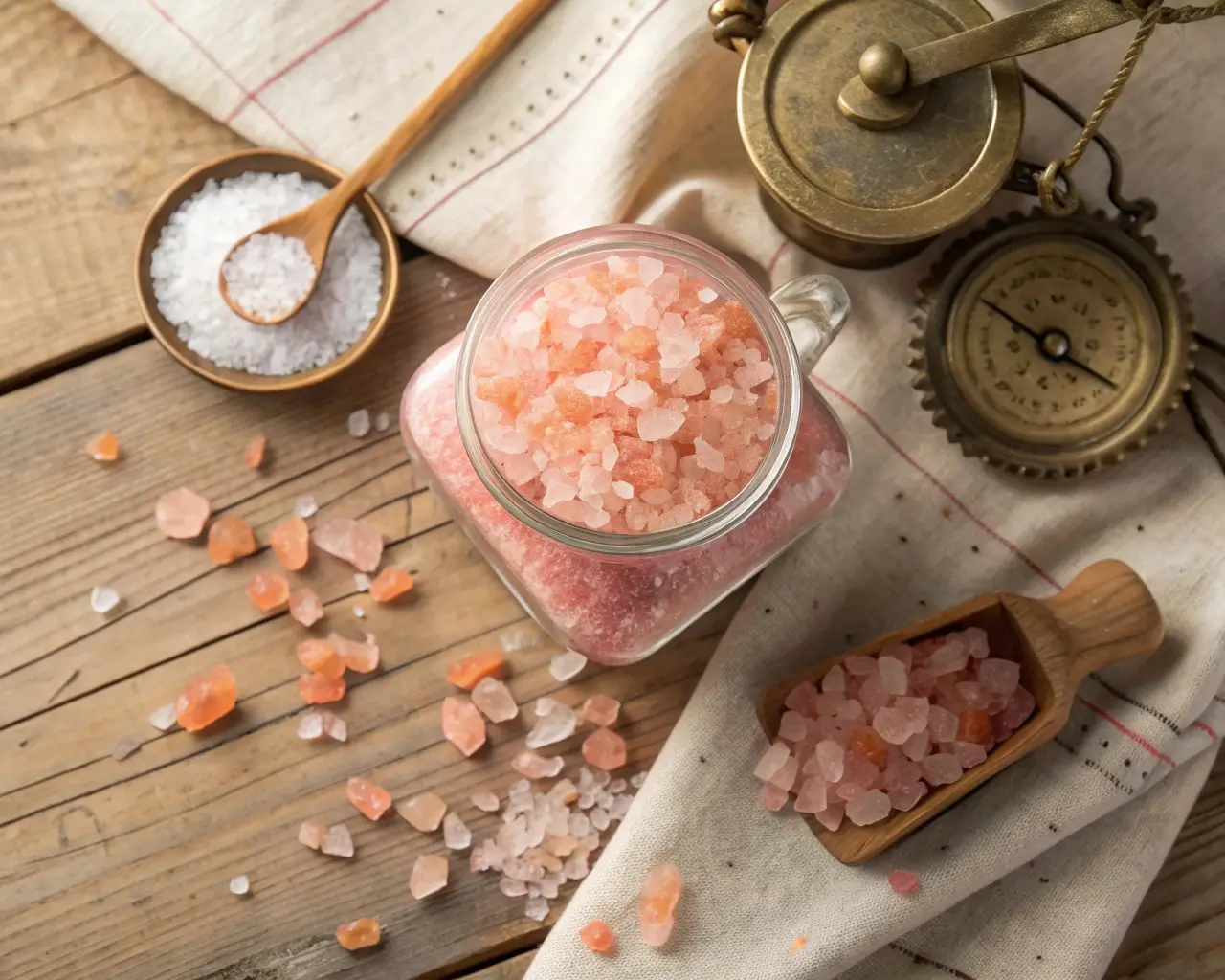Let’s talk about the pink elephant in the wellness room—or should I say, the himalayan pink salt in your spice cabinet. Actually, you know what, scratch that metaphor because it’s not even an elephant, it’s more like… this tiny jar of crystals that somehow became the most overanalyzed ingredient in modern cooking.
If you’ve been searching for himalayan pink salt recipes or wondering about himalayan sea salt recipes (they’re basically the same thing, by the way—marketing just loves giving us multiple names), you’ve probably seen it everywhere. Instagram influencers swearing it’ll detox your liver (spoiler: it won’t), food bloggers claiming it makes gluten-free bread “finally taste good,” and that one friend—you know the one—who won’t shut up about their morning sole water ritual like they’ve discovered the fountain of youth or something.
So what’s actually true here about these himalayan pink salt recipes everyone’s obsessed with? And more importantly, what’s complete and utter nonsense?
The Problem Everyone’s Facing (But Nobody’s Really Talking About)
The frustrations are so real it hurts. Whether you’re exploring himalayan sea salt recipes for health reasons or diving into himalayan pink salt recipes for better flavor, the same problems keep popping up: gluten-free recipes that taste like cardboard—no, worse than cardboard, like cardboard that’s been sitting in a basement for three years. Recipes that crumble apart when you look at them wrong.
Conflicting information everywhere about pink salt’s health benefits (is it a detox miracle or just expensive placebo salt?). Wasting money on wellness trends that don’t deliver. Not knowing how to actually USE pink salt beyond just… I don’t know, sprinkling it on scrambled eggs and hoping for the best? And recipes—oh my god, the recipes—that don’t explain WHY pink salt makes a difference. They just say “use it” like that’s supposed to mean something.
You’ve probably wondered: Is pink salt actually different from regular salt, or is this just marketing genius? Why do some himalayan pink salt recipes specifically call for it when table salt costs like a tenth of the price? And what’s with all those detox drink recipes flooding TikTok—are they real or just pretty pictures designed to sell mason jars?
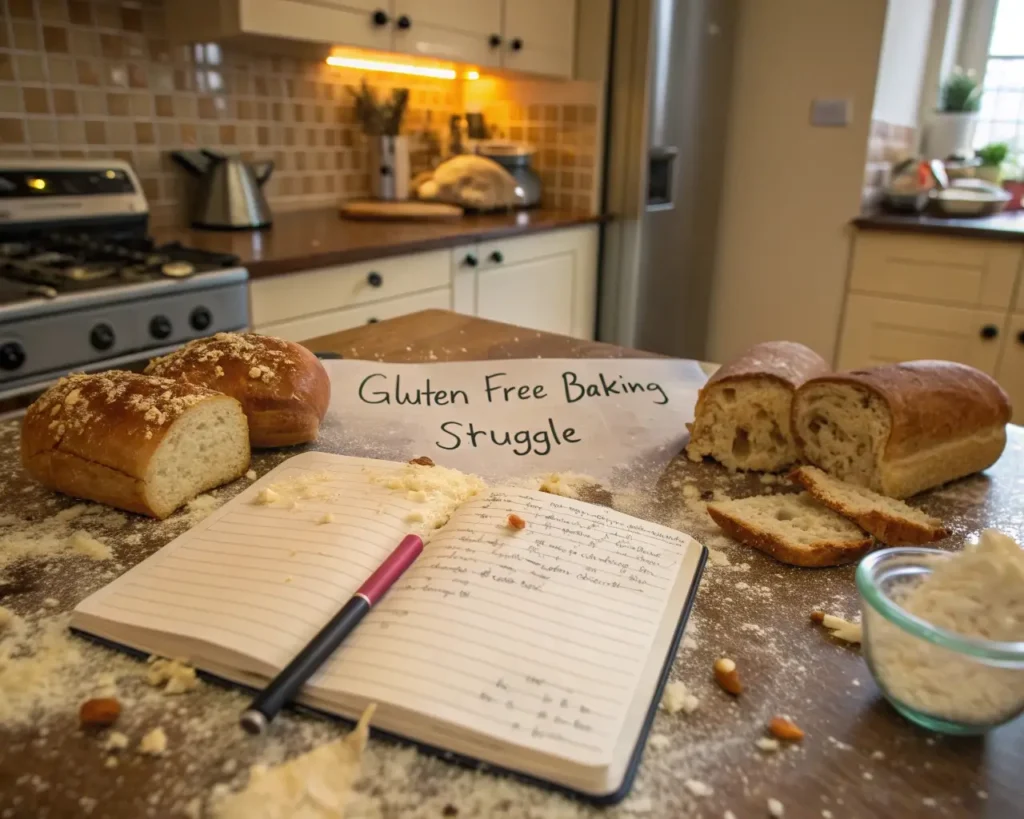
What You’ll Actually Get From This Guide
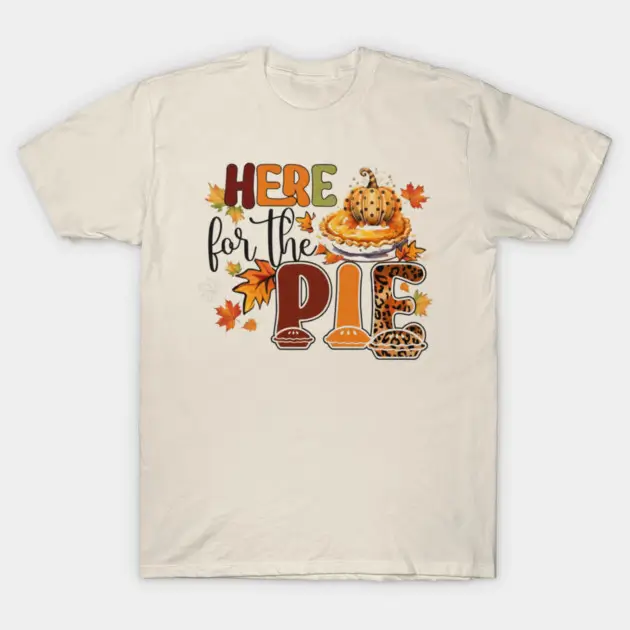
In this comprehensive guide—and I promise it’s actually comprehensive, not just “comprehensive” in that SEO way where it’s really just fluff—you’re getting tested himalayan pink salt recipes and himalayan sea salt recipes that work. From gluten-free crackers that rival store-bought (seriously, my neighbor asked where I bought them) to cookies people literally won’t believe are gluten-free.
Real science, zero BS about what pink salt can and can’t do for your health. Spoiler: it’s not magic, but it’s also not totally useless either, which is… complicated. Plus culinary techniques that explain exactly HOW pink salt improves texture, flavor, and structure in gluten-free baking, because understanding the “why” changes everything.
We’re starting with the fundamentals—what makes pink salt actually different (hint: it’s not just the Instagram-friendly color). Then we’re diving into culinary science: why grain size matters way more than you think, how it behaves in gluten-free doughs, and the timing tricks that separate good results from great ones.
The heart of this guide? Five essential himalayan pink salt recipes that showcase this ingredient’s versatility: crackers that actually snap instead of dissolving into sad crumbs, bread with structure and moisture (not one or the other—both!), sourdough that develops real tang, cookies where sweet meets salty perfectly, and yes—that viral electrolyte drink everyone’s obsessed with. But we’re going to have real talk about what it does and doesn’t do, because the claims online are… wild.
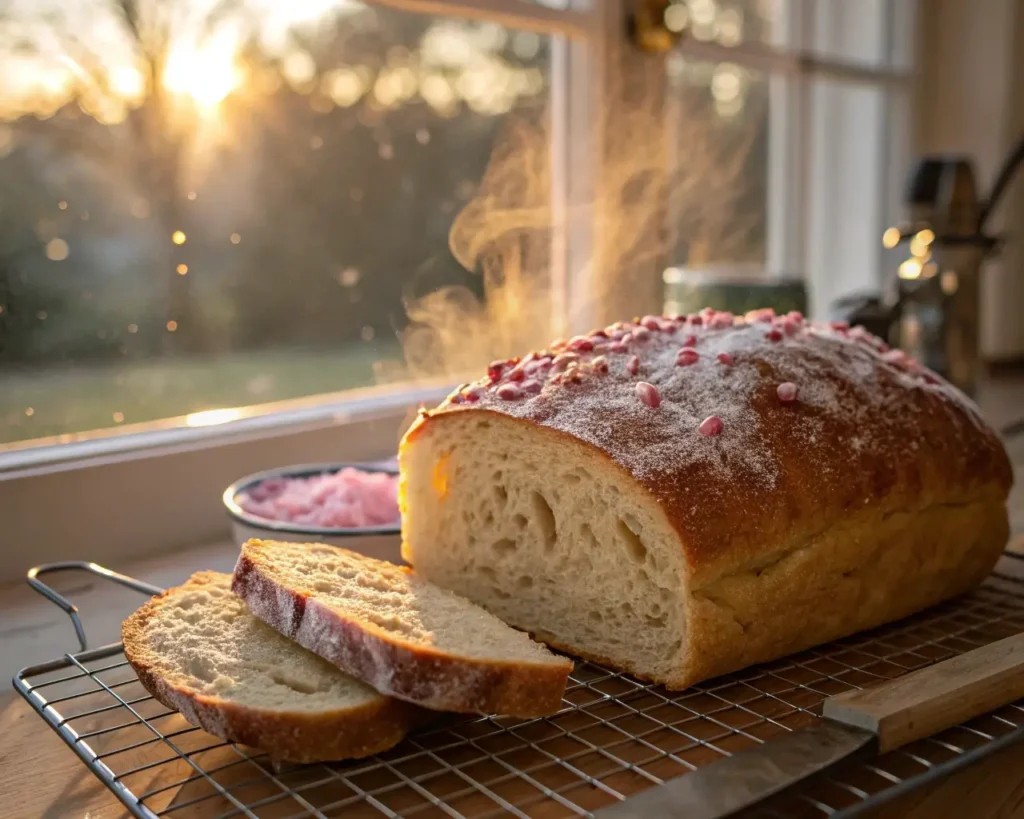
What Makes Himalayan Pink Salt Unique? (And What Doesn’t)
Okay, real talk time: pink salt isn’t going to cure your chronic illness or give you superhuman powers. If anyone tells you otherwise, they’re either selling something or deeply confused about how salt works. But it IS legitimately different from table salt, and those differences matter when you’re baking gluten-free bread at 2 AM wondering why it fell apart again. Trust me, I’ve been there. Multiple times. More times than I’d like to admit, honestly.
Where Pink Salt Actually Comes From (The Geology Lesson Nobody Asked For)
Picture this—and I mean really picture it—250 million years ago, ancient oceans covered what’s now the Himalayan mountain range. As those oceans evaporated over millennia, they left behind crystallized salt deposits, completely untouched by modern pollution, microplastics, or that anxiety-inducing list of things contaminating literally everything else in our food supply.
Fast forward to now: that salt gets hand-mined from the Khewra Salt Mine in Pakistan (fun fact: it’s the world’s second-largest salt mine, which I learned while falling down a Wikipedia rabbit hole at midnight). Workers wash it, crush it, and… that’s basically it. No bleaching. No anti-caking agents that sound like chemistry experiments gone wrong. Or no iodine added. Just ancient mineral deposits that happen to be gorgeous shades of pink—ranging from pale peachy tones to deep salmon, depending on the mineral content.

The natural pink color comes from iron oxide and trace minerals—not dye, which is important for authentic himalayan pink salt recipes. And before you ask—yes, there’s fake pink salt out there. A lot of it, actually. If it’s suspiciously cheap (like $3 for a huge container) and perfectly uniform in color (like, every crystal is exactly the same shade), you’re probably looking at regular salt with food coloring. Not what we want. Not what we came here for.
Mineral Composition: What’s Actually In There? (The Science Part)
Here’s where pink salt fans and skeptics clash like opposing armies. Pink salt supposedly contains up to 84 trace minerals—calcium, magnesium, potassium, iron, zinc, and a bunch of others with names that sound like Pokemon characters I’ve never heard of.
Now, the honest truth—and I’m being really honest here, not “influencer honest” where you still lie a little—the amounts are small. Like, really small. Tiny. You’re not going to fix a magnesium deficiency by switching your salt. Research published in Environmental Science assessing mineral composition of pink salt found that pink salt is still 98% sodium chloride. Same as table salt, essentially.
But—and this is the interesting part, the part where it actually matters for your himalayan sea salt recipes—those trace minerals DO affect flavor. Pink salt tastes cleaner, less harsh, slightly more complex than stripped-down table salt. Think of it like the difference between white sugar and turbinado sugar—chemically they’re similar, but taste them side by side and your tongue knows immediately.
Health Claims vs. Actual Science (Let’s Get Real For a Minute)
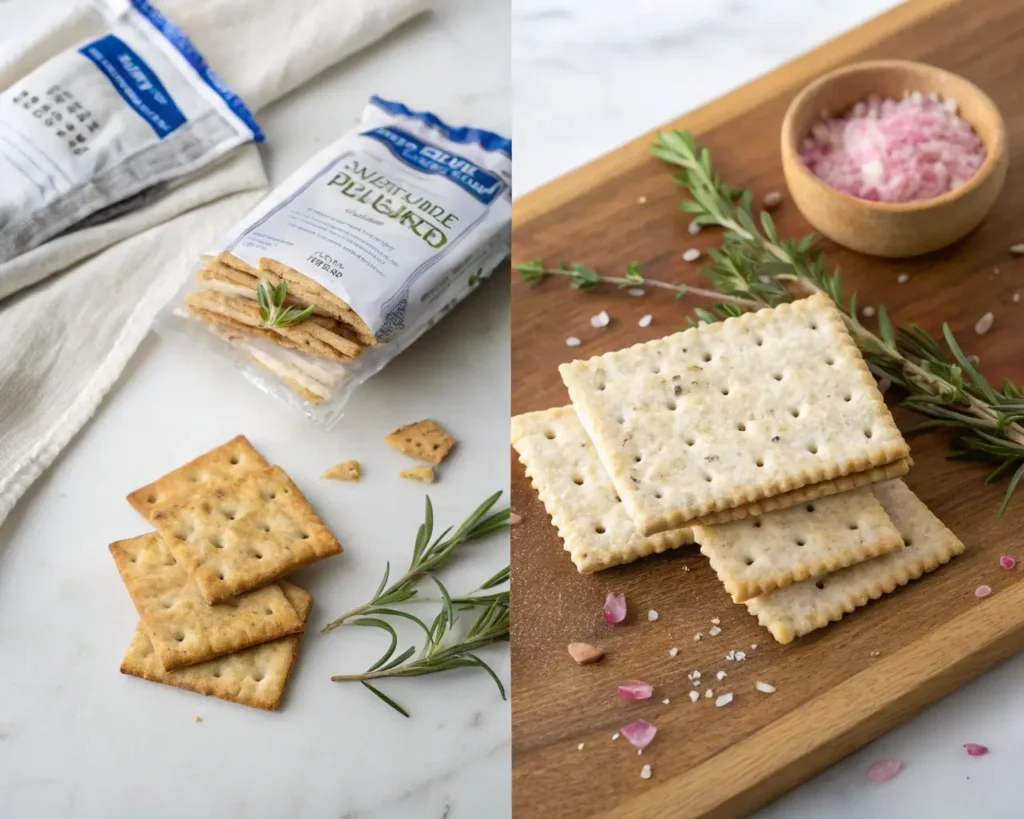
MYTH: “Pink salt detoxes your body”
REALITY: Your liver and kidneys handle detoxification 24/7, whether you eat pink salt or not. Salt doesn’t “pull toxins out”—that’s not how chemistry works, that’s not how any of this works. However (and this is important), adequate electrolyte balance, which salt provides, supports those organs functioning properly. Supporting isn’t the same as detoxing. Words matter.
MYTH: “Pink salt is low-sodium”
REALITY: Nope. Still ~98% sodium chloride. If you need low-sodium for health reasons, this isn’t it. This is regular salt in a prettier package.
MYTH: “The minerals in pink salt provide significant health benefits”
REALITY: The amounts are too small for meaningful nutritional impact. You’d need to eat dangerous, potentially lethal amounts to get therapeutic doses of those minerals. BUT—and there’s always a but—for people already deficient in certain minerals, every little bit helps. And the taste encourages using less salt overall, which is legitimately useful.
WHAT’S TRUE: Pink salt is unrefined, lacks additives, and provides trace minerals in amounts that affect flavor more than nutrition. That’s still useful—just not miraculous. Not everything needs to be miraculous to be worthwhile.
The Kitchen Science: How Pink Salt Performs Differently (This Part Gets Nerdy)
This is where it gets interesting—and where most recipe blogs skip the explanation because it’s “too complicated” or whatever. But understanding WHY pink salt behaves differently in your himalayan pink salt recipes means you can troubleshoot when recipes go sideways. Which they will. Because gluten-free baking is basically chaos theory in edible form.
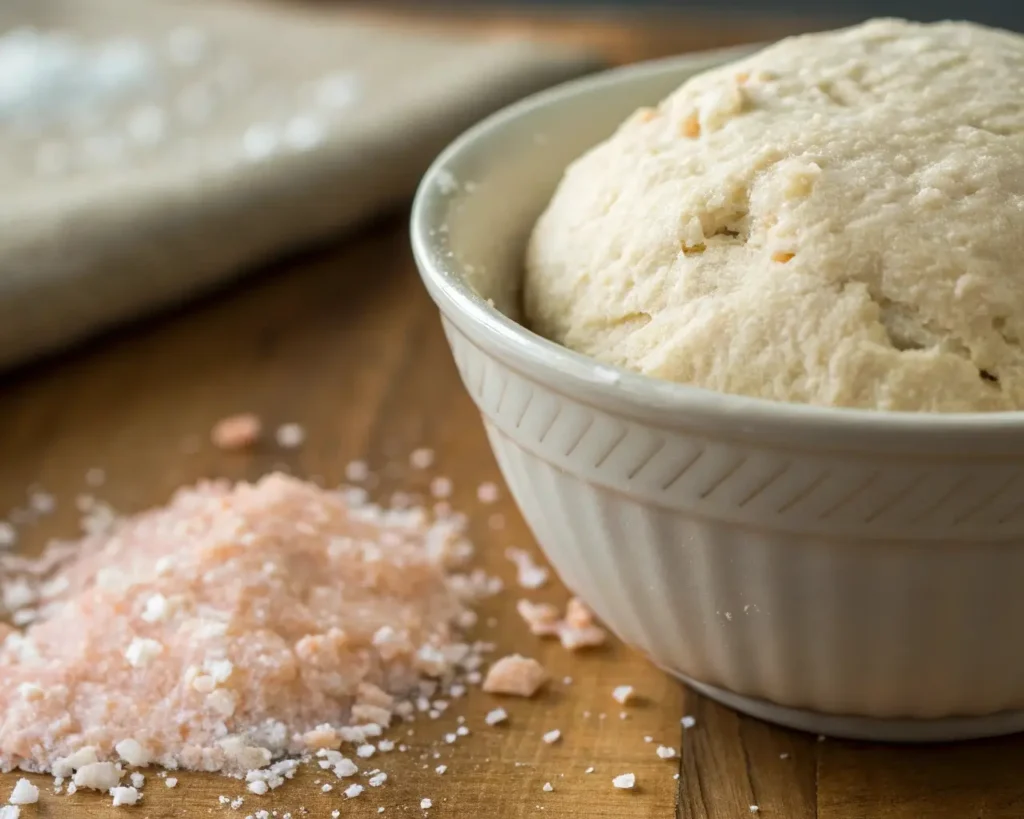
If you’re new to gluten-free baking (welcome to the club, the meetings are chaotic), our guide to understanding gluten-free flour blends will help you choose the right foundation for these pink salt recipes. Because flour matters. Like, it matters so much.
Grain Size Matters More Than You Think (Way More)
Pink salt comes in basically three textures, and using the wrong one can sabotage your recipe faster than you can say “why is this gummy?”
Fine Grain (Powder-Like):
Best for mixing into doughs, batters, and wet ingredients. Dissolves quickly and distributes evenly throughout your recipe. Use it in gluten-free bread recipes, cookie dough, cake batters—anywhere you need even seasoning from the start. Don’t use it for finishing or topping because it dissolves and disappears, leaving you wondering where all the salt went.
Medium Coarse (Small Crystals):
Best for all-purpose cooking, seasoning during the cooking process. Balances dissolution rate with texture. Most versatile option for everyday cooking. This is the “if you only buy one, buy this one” size.
Extra Coarse (Chunky Crystals):
Best for finishing, visual appeal, textural contrast. Provides crunch and those satisfying bursts of flavor when you bite down. Use for topping gluten-free cookies, finishing steaks, making people think you’re fancier than you actually are. Don’t—seriously, don’t—use for mixing into batters because it won’t dissolve during baking and you’ll get random grainy spots that taste weirdly salty.
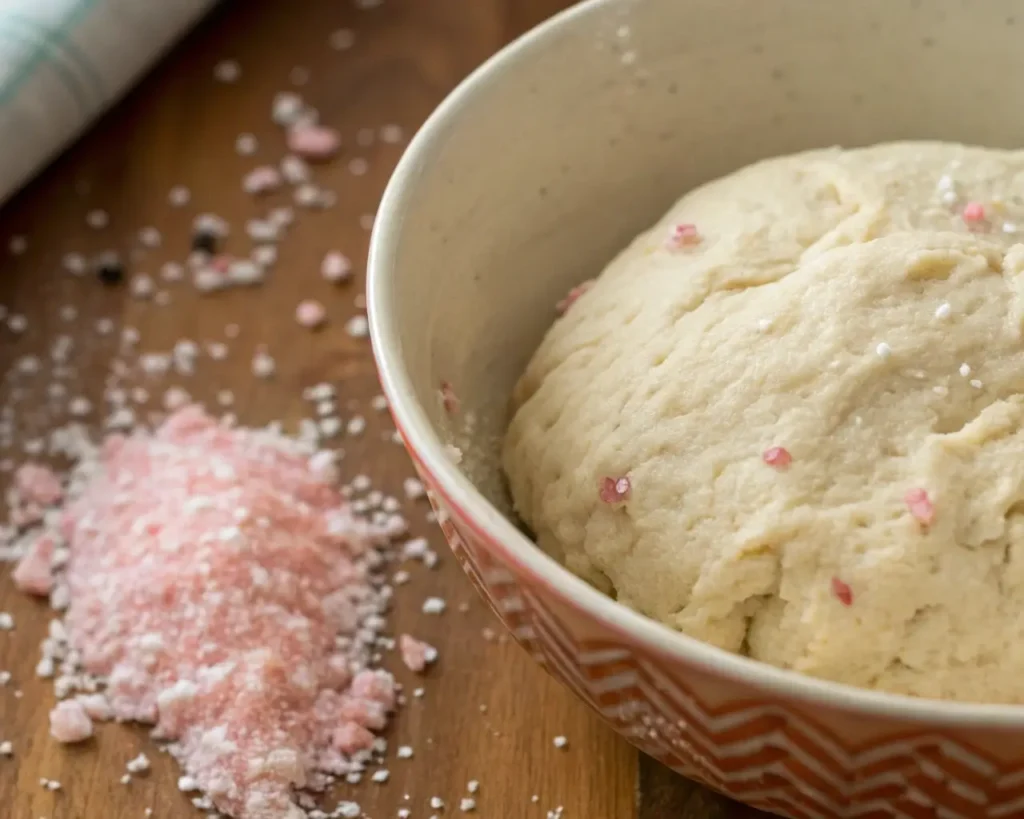
Timing & Method: When to Add Pink Salt (Because It Actually Matters)
The Three-Stage Salt Strategy:
Stage 1: Foundation Salting (During Prep)
Mix fine pink salt into doughs and batters at the beginning. This seasons throughout and provides structure—salt does more than flavor, it actually affects how ingredients bind together. Example: Adding 1 tsp fine salt to gluten-free cracker dough before anything else.
Stage 2: Layering Salt (During Cooking)
Season proteins mid-cooking. Allows adjustment and flavor development as things cook. Example: Salting vegetables halfway through roasting instead of at the beginning, which draws out moisture and concentrates flavors differently.
Stage 3: Finishing Salt (Right Before Serving)
Coarse crystals for textural contrast. Maximum visual impact. Controlled flavor burst that hits your tongue first. Example: Sprinkling coarse pink salt on gluten-free sourdough right before it goes in the oven, so the crystals stay visible and crunchy.
💡 PRO TIP: For gluten-free baking—and this changed my entire approach—use 75% of your salt during mixing (fine) and save 25% for finishing (coarse). This gives you both structural benefits and that “fancy bakery” look that makes people ask where you bought it.
Pink Salt + Gluten-Free Ingredients = Chemistry Magic (Or Something Like It)
Gluten-free baking is basically chemistry without a safety net. Or instructions. Or a supervisor who knows what they’re doing. Salt plays multiple roles that become even MORE important when gluten isn’t there to hold things together like the structural protein it normally is.
When selecting your gluten-free flour for these himalayan sea salt recipes, it’s important to know that the FDA defines gluten-free as containing less than 20 parts per million, which is the lowest level that can be consistently detected in foods using valid scientific analytical tools. Knowledge is power, or whatever.
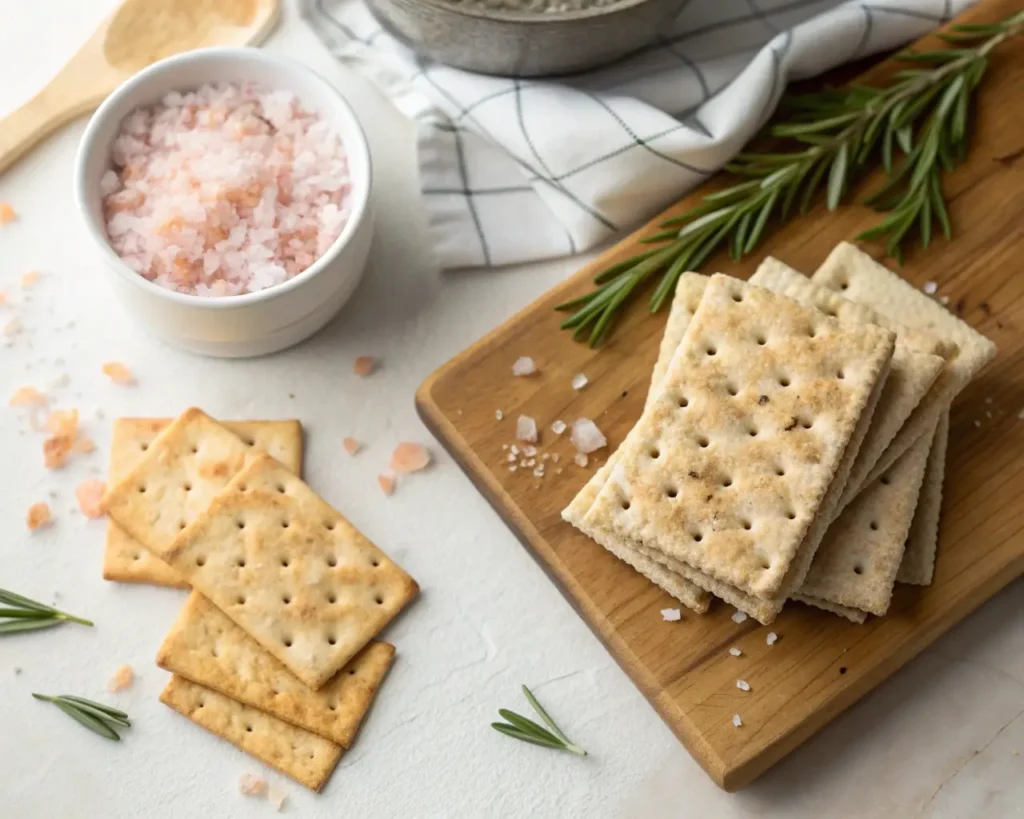
Role 1: Strengthening Alternative Binders
When you’re using xanthan gum in gluten-free bread (and you probably are, because what else are you using?), salt helps strengthen those bonds. The xanthan gum builds the structure, but salt tightens all the connections. Think of it like… xanthan gum is the framework, salt is the bolts that hold it together. That analogy might not make sense, but you get the idea.
Role 2: Moisture Management
Gluten-free flours absorb liquid differently than wheat flour—some are super thirsty, some are hydrophobic weirdos. Salt helps regulate that absorption, preventing both dry, crumbly results (disappointing) AND gummy, under-baked centers (even more disappointing, somehow).
Role 3: Controlling Fermentation
In gluten-free sourdough recipes, salt slows yeast activity just enough to develop flavor without over-proofing. Too little salt = bread that rises too fast and collapses like a sad deflating balloon. Too much = bread that barely rises and sits there mocking you.
Role 4: Flavor Masking
Real talk: some gluten-free flours taste… weird. Off. Strange. Bean flours, sorghum, even rice flour can have flavors that make you go “hmm, that’s… interesting?” in a not-good way. Salt’s flavor-enhancing properties help mask those notes while amplifying the good flavors like butter, vanilla, chocolate. It’s like audio mixing but for your mouth.
Essential Pink Salt Recipe Cluster (The Good Stuff)
Okay, here’s where theory meets your actual kitchen—the one with the mystery stain on the counter you can’t quite identify and the oven that runs 25 degrees hot. These five himalayan pink salt recipes showcase this ingredient’s versatility, and more importantly, they’re all recipes I’ve tested multiple times until they actually worked. Not “worked in theory.” Worked in my actual kitchen with my actual ingredients.
A. Easy Himalayan Pink Salt Gluten-Free Crackers
Store-bought gluten-free crackers cost $6 a box and taste like expensive cardboard. These cost about $1.50 per batch and taste like you actually know what you’re doing in the kitchen (whether or not you do is between you and your kitchen).
What Makes This Recipe Special:
The pink salt does two jobs here—it’s multitasking, which is efficient and beautiful. Fine salt in the dough provides structure and even seasoning throughout every bite, while coarse salt on top creates those dramatic crystals you see at Whole Foods and wonder how they got there.
But here’s the real trick, the thing that makes this work: the dual-grain technique. Most cracker recipes use one flour and call it a day. This one uses a rice flour base for that satisfying crispness plus almond flour for richness and depth. The salt bridges those two textures together, like a diplomatic translator between ingredients that wouldn’t normally cooperate.
Critical Success Points:
- Fine salt strengthens the cracker structure by tightening the almond flour proteins (science!)
- Coarse salt provides visual appeal AND those satisfying flavor bursts when you bite down
- Result: crackers that rival artisan brands at 1/4 the cost, which feels like winning
👉 Get the full step-by-step recipe: Easy Himalayan Pink Salt Trick Gluten-Free Crackers
B. Best Himalayan Pink Salt Gluten-Free Bread
Let me tell you about the 11 loaves of failed gluten-free bread that came before this recipe worked. Eleven. That’s almost a dozen. Some collapsed in the oven like they’d given up on life. Some turned into bricks I could’ve used for home repairs. One was so gummy I legitimately considered using it as a doorstop—it had the right weight and everything.
What Makes This Recipe Special:
Most gluten-free bread recipes are overcomplicated messes with 47 ingredients, half of which you’ll never use again. This one streamlines everything while using pink salt strategically for structure (fine salt strengthens those xanthan gum bonds we talked about), moisture (helps regulate water absorption in the dough so it’s not a swamp), and crust development (coarse salt on top creates that bakery-style finish that makes people think you’re fancy).
Game-Changing Technique:
Gluten-free bread dough should look wrong. Like, you’ll look at it and think “this can’t be right.” It should be more like thick cake batter than traditional bread dough. That’s NORMAL. That’s what we want. The salt helps in three crucial ways: slows yeast activity so dough doesn’t over-proof and collapse, strengthens the xanthan gum network (structure without gluten, somehow), and develops flavor during the rise instead of tasting like nothing.
If things don’t go as planned—and sometimes they won’t, that’s just bread—our comprehensive guide to troubleshooting common gluten-free bread issues covers every problem you might encounter. Dense bread, gummy centers, hockey pucks—we’ve seen it all.
👉 Complete recipe with troubleshooting: Best Himalayan Pink Salt Trick for Gluten-Free Bread
C. Pink Salt Gluten-Free Sourdough Recipe
Gluten-free sourdough sounds impossible, right? Like trying to make water that isn’t wet. How do you get that signature tang, that complex flavor, without gluten doing its gluten thing?
Turns out: very carefully, with patience you didn’t know you had, and pink salt as your secret weapon.
What Makes This Recipe Special:
Traditional sourdough relies on gluten for structure AND flavor development—it’s pulling double duty. Without gluten, we need other strategies that are honestly more complicated but also more interesting. Pink salt regulates wild yeast activity (prevents over-fermentation, which creates that awful boozy smell), strengthens alternative binders like psyllium and xanthan gum, enhances the sour flavor profile we’re trying to achieve, and creates that professional-looking crust with coarse salt topping that makes you look like you know what you’re doing.
The Science Behind It:
In gluten-free sourdough, salt slows down the wild yeast just enough to develop those complex flavors without the dough turning into a puddle. It’s a delicate balance—too little salt and it ferments too fast, too much and nothing happens. Timing matters more than you’d think: salt added AFTER autolyse creates optimal structure without inhibiting flavor development. It’s all about when, not just how much.
Before you attempt sourdough—and I say this with love—make sure you’ve mastered how to make a gluten-free sourdough starter. It’s the foundation that makes or breaks your bread. Skip this step and you’re basically building a house without a foundation.
👉 Master the technique: Pink Salt Sourdough Gluten-Free Recipe
D. Himalayan Pink Salt Gluten-Free Cookies
These cookies made my gluten-eating friend—the one who’s skeptical about everything gluten-free—pause mid-chew and say, “Wait, these are gluten-free?” with genuine surprise in her voice. That’s the moment you know you’ve nailed it. That’s the moment you take a mental screenshot.
What Makes This Recipe Special:
Sweet + salty is having a moment right now, but pink salt brings more than just trendy flavor to gluten-free cookies. Fine salt in dough improves chewiness by strengthening binding (cookies that hold together! Imagine that!), prevents the crumbly-falling-apart issue that plagues so many GF cookies, while coarse salt on top provides that crunch contrast that makes each bite interesting instead of monotonous.
The Technique That Changes Everything:
Most recipes just say “sprinkle salt on top” like that’s sufficient instruction. Wrong. So wrong. Here’s what actually works: Shape cookie dough balls, press 3-5 coarse pink salt crystals into the TOP of each ball, press gently so crystals embed slightly but remain visible, then bake. If you just sprinkle without pressing, half your salt falls off during baking or when you move the cookies. This way the salt stays put AND looks intentional instead of accidental.
👉 Full recipe with pro tips: Himalayan Pink Salt Gluten-Free Cookies
E. Himalayan Pink Salt Trick Recipe for Weight Loss (The Reality Check You Actually Need)
Okay, let’s talk about the elephant in the room—or maybe more accurately, the pink crystal in the mason jar that’s all over your social media feeds. The Himalayan Pink Salt Trick Recipe for Weight Loss has absolutely exploded across TikTok, Instagram, and probably wherever the kids are hanging out these days that I don’t know about yet.
Influencers are making wild claims: it’ll flush toxins (nope), balance your pH (still nope), cure bloating instantly (maybe in specific cases?), boost metabolism by 30% (definitely not), and basically solve every health problem you’ve ever had if you just drink enough pink salt water.
👉 Full recipe with pro tips: Himalayan Pink Salt Trick Recipe for Weight Loss
Practical Tips & Storage Techniques (The Boring But Important Stuff)
Great recipes are useless if your salt clumps into solid rocks, you can’t figure out how much to use because your measuring spoons are all slightly different sizes, or you’re not sure which grain size to buy because the packaging is confusing.
And once you’ve baked your perfect loaf—after all that work and time—knowing the right way to store gluten-free bread properly ensures it stays fresh and delicious for days instead of turning into a hockey puck overnight.
Storage & Shelf Life (Keep Your Investment Usable)
Pink salt can last basically forever—it’s 250 million years old already, so what’s a few more decades? But HOW you store it determines whether it stays usable or turns into a solid brick you need a chisel to break apart.
Storage Solutions:
✅ DO:
- Store in airtight glass jars, not metal (salt corrodes metal lids over time—chemistry strikes again)
- Use plastic lids or flip-top glass containers
- Keep away from heat sources like stoves, dishwashers, radiators
- Add 5-6 grains of rice to absorb moisture (old trick that actually works)
- Store fine salt separately from coarse (different uses, different containers, less confusion)
❌ DON’T:
- Leave in original plastic bags that don’t seal properly
- Store in metal containers with metal lids that will corrode
- Keep near sink, stove, or other humid areas where moisture accumulates
- Mix different grain sizes in one container (trust me on this)
💡 QUICK FIX: Salt already clumped into one solid mass? Spread on baking sheet, dry in 200°F oven for 10 minutes, then re-store properly. Or use a coffee grinder to pulverize clumps back to usable texture.
Salt-to-Flour Ratios (The Cheat Sheet You’ll Reference Constantly)
📊 PINK SALT RATIOS FOR GLUTEN-FREE BAKING
Breads: 1.8-2.2% of flour weight
- Example: 500g flour = 9-11g salt (about 1.5-2 tsp)
- This is by weight, not volume—get a kitchen scale
Crackers: 2-2.5% of flour weight
- Example: 200g flour = 4-5g salt (about 3/4-1 tsp)
- Can go higher if you like really salty crackers
Cookies: 0.5-1% of flour weight (less sweet) to 0.25-0.5% (more sweet)
- Example: 280g flour = 1.4-2.8g salt (about 1/4-1/2 tsp)
- Adjust based on how sweet your dough already is
Rule of Thumb: When in doubt, start with 2% for savory baking, 0.5% for sweet baking, then adjust from there based on taste. You can always add more salt, but you can’t take it out.
Quick Reference: Grain Size for Every Application
🧂 PINK SALT GRAIN SIZE GUIDE
EXTRA FINE (Powder):
✓ Baking—dissolves instantly, even distribution
✓ Drinks—no grittiness or chunks
✓ Spice blends—mixes well with other powders
✗ Finishing—disappears completely, no visual impact
FINE (Table Salt Size):
✓ All-purpose cooking
✓ Dough mixing
✓ Even seasoning throughout
✓ Most versatile—if you only buy one, buy this
EXTRA COARSE (Large Crystals):
✓ Finishing only—don’t try to mix into batters
✓ Visual drama that makes things look professional
✓ Textural contrast with satisfying crunch
✓ “Fancy bakery” look for minimal effort
✗ Don’t mix into batters—won’t dissolve, creates weird grainy pockets
💡 PRO TIP: Buy ONE container of fine pink salt for everyday use, ONE container of extra coarse for finishing and looking fancy. That covers 95% of your needs without cluttering your cabinet.
The Uncomfortable Truth About Pink Salt Health Claims (Sorry Not Sorry)
Okay, we need to have an honest conversation. Like, really honest, not “wellness brand honest” where they’re still trying to sell you something. The wellness industry has turned pink salt into this miracle cure that’ll supposedly detox your liver, balance your hormones, cure acne, and probably file your taxes for you if you use enough of it.
I’m about to burst some bubbles. But I’ll also show you the ACTUAL benefits that are real and useful, because dismissing everything is as bad as believing everything.
What Pink Salt Actually DOES (The Real Benefits, Not the Fantasy Ones)
REAL BENEFIT 1: Proper Electrolyte Balance
✅ What This Means:
Sodium, potassium, and magnesium work together to regulate fluid balance, support nerve signals, enable muscle contractions, and facilitate nutrient absorption. Your body needs these things to function properly.
✅ When Pink Salt Helps:
- You’re physically active and sweat regularly (electrolytes leave through sweat)
- You eat very low-processed foods and thus consume less sodium than before
- You’re properly hydrated but still feel sluggish or get headaches
- Post-workout recovery when your body’s depleted
REAL BENEFIT 2: Better Flavor = Less Salt Needed
✅ What Research Shows:
The trace minerals in pink salt create a more complex flavor profile—it’s not just “salty,” it’s got depth. Many people find they can use slightly less pink salt to achieve the same satisfying saltiness, which means less total sodium intake if you’re monitoring that.
REAL BENEFIT 3: No Additives
✅ What This Means:
Quality pink salt contains no anti-caking agents (those weird chemicals that prevent clumping), no aluminum compounds, no added iodine (unless specifically fortified), and no bleaching chemicals. It’s just… salt. With minerals.
✅ Important Note:
Table salt is fortified with iodine because many people are iodine-deficient, and iodine deficiency causes serious health problems. If you only use pink salt and never eat iodized salt, consider other iodine sources like seaweed, fish, dairy products, eggs. Don’t create a deficiency while trying to be healthy.
REAL BENEFIT 4: Culinary Advantages
✅ What Actually Works:
- Multiple grain sizes for different applications and techniques
- Cleaner flavor that doesn’t overpower delicate ingredients
- Visual appeal in finishing that makes food look more expensive
- Better texture in gluten-free baking compared to regular table salt
Safety Science: Sodium Intake & Heavy Metals (The Serious Stuff)
Current Guidelines:
According to the World Health Organization’s sodium intake recommendations for adults, people should consume less than 2000 mg/day of sodium (equivalent to less than 5 g/day salt, which is about one teaspoon). Similarly, the American Heart Association recommends no more than 2,300 mg sodium daily, with an ideal goal of 1,500 mg for most adults.
Pink Salt Impact:
Switching to pink salt doesn’t make it okay to consume excessive sodium. Salt is salt—your body processes sodium from pink salt the same way it processes sodium from table salt. Chemistry doesn’t care about color.
⚠️ Consult Your Doctor Before Increasing Salt If You Have:
- High blood pressure (hypertension)
- Kidney disease or kidney issues
- Heart disease or cardiovascular problems
- Fluid retention issues or edema
- Are on a sodium-restricted diet for any reason
The Heavy Metals Question (Yes, We Need to Talk About This):
A peer-reviewed study analyzing the mineral composition of pink salt found that independent lab tests have identified lead, arsenic, and cadmium in parts-per-million—amounts below FDA safety thresholds, similar to levels in many foods we eat regularly. This doesn’t mean pink salt is dangerous, but it does mean it’s not “pure” in the way marketing suggests.
Practical Guidance:
✅ Buy from reputable brands with third-party testing and certifications
✅ Look for certifications like USDA, Non-GMO Project, food-grade designations
✅ Avoid suspiciously cheap “pink salt” that might be dyed regular salt
✅ Use reasonable amounts—don’t exceed dietary sodium guidelines just because it’s pink
Your Pink Salt Journey Starts Here (Or Doesn’t, No Pressure)
Remember at the beginning when I said pink salt isn’t magic? I stand by that. 100%. But here’s what I’ve learned after two years of testing, dozens of failed recipes that went straight to the trash, and hundreds of conversations with readers who’ve tried these himalayan pink salt recipes: Pink salt might not be magic, but using it INTELLIGENTLY—understanding when and why and how much—makes a real difference, especially in gluten-free baking where every advantage matters and you’re already fighting an uphill battle.
For those ready to take their skills to the next level and really understand what they’re doing, explore our comprehensive guide to mastering artisan gluten-free bread techniques that builds on these pink salt fundamentals and takes you from beginner to “wait, you made this?” territory.
Explore the Full Pink Salt Collection (Pick Your Adventure)
Now that you understand the WHY and the HOW—not just the WHAT—it’s time to actually cook. Here’s where to start based on your current skill level and goals:
🍞 Beginner-Friendly Starting Point:
→ Easy Himalayan Pink Salt Gluten-Free Crackers
Why start here: Fast results (under an hour), hard to mess up completely, immediate satisfaction when people ask for the recipe
🥖 Ready for Real Bread:
→ Best Himalayan Pink Salt Gluten-Free Bread
Why try this: Game-changing sandwich bread that actually holds together, worth every minute of the time investment
🍪 Sweet Tooth Calling:
→ Himalayan Pink Salt Gluten-Free Cookies
Why bake these: Impressive enough for gifts, craveable enough that you’ll hide them from yourself, makes great “I’m sorry” presents
🥯 Advanced Baker Challenge:
→ Pink Salt Sourdough Gluten-Free Recipe
Why level up: Real sourdough tang, serious bragging rights, the kind of bread that makes people stop mid-conversation
Share Your Experience (I Actually Want to Hear From You)
📝 Rate & Review:
Tried one of these himalayan sea salt recipes or himalayan pink salt recipes? Go back to that specific post and leave an honest star rating, comment with your actual results (failures included), and share photos if you’re feeling brave. Every comment helps someone else troubleshooting the same issue you just solved.
💬 Share Your Pink Salt Story:
Which recipe are you trying first? What gluten-free baking challenge are you trying to solve? Did pink salt make a difference you actually noticed, or was it all placebo effect? Drop your thoughts in the comments below—seriously, I read them.
If you’re dealing with celiac disease, gluten sensitivity, or just trying to eat cleaner (whatever that means to you), you deserve recipes that actually work—not complicated processes that fail spectacularly or expensive products you don’t need or understand.
Start with one recipe this week. Just one. See if it makes a difference in your kitchen, with your ingredients, in your chaos. Then come back and let me know how it went—the good, the bad, and the “I-accidentally-used-tablespoons-instead-of-teaspoons” disasters we all know too well.
We’re all figuring this out together, stumbling through gluten-free baking like it’s a dark room and someone keeps moving the furniture. That jar of pink salt in your cabinet? It’s about to become your gluten-free baking secret weapon. Or at least a really useful tool. Not everything needs to be a weapon.
Happy baking, friends. Now go make something delicious. Or at least edible. We’ll take edible.

